Helen Reddy. Does the name sound familiar? It should. And if it doesn’t, you’re in for a real treat. How about I AM WOMAN? A song that became an anthem for the women’s movement around the globe and packs as much punch today as it did in 1971 when it was first written and recorded by Helen Reddy – “I am woman. Hear me roar. … I am strong. I am invincible.” When Helen Reddy wrote that song, she had no grand design for it to become the musical connective tissue and rallying cry for the battle for equal rights and the ratification of the 19th Amendment to the U.S. Constitution. She was a singer, songwriter, wife, mother, and daughter who just had something to say about her own life and the battles she faced in the “white male boardrooms” of record executives. Although almost 50 years later the 19th Amendment still awaits ratification and an extension by Congress to permit its adoption, Helen Reddy went on to international stardom selling more than 25 million albums, had 3 number one singles on the Billboard charts, 9 charted singles, became the first Australian to win a Grammy for Best Female Pop Vocal Performance, had her own television show, and starred in movies and on stage. One would think that with that kind of resume there would have been multiple films made about her life. But, guess what? There aren’t. That is until now.

Director UNJOO MOON roars onto the narrative film scene with I AM WOMAN, telling the story of Helen Reddy, a young single mother with a 3-year old daughter in tow arriving in New York City in 1966 after winning a singing contest in Australia. Showcasing the passion and ambition that carried Reddy through the ups and downs, loves and losses, successes and failures, as she consistently broke through that glass ceiling, Moon delivers an intimate portrait that not only tells Reddy’s story but conveys her emotional journey through her music.
I spoke with Australian filmmaker UNJOO MOON at length in this exclusive conversation on the film’s opening day in the United States, covering every aspect of the making of I AM WOMAN, from her own passion and drive to tell Helen Reddy’s story, to working with her creative team – editor Dany Cooper, cinematographer Dion Beebe, production designer Michael Turner, costumer Emily Seresin, screenwriter Emma Jensen, as well as cast, Tilda Cobham-Hervey as Helen Reddy, Danielle Macdonald as rock journalist Lillian Roxon, and Evan Peters as Reddy’s husband/manager Jeff Wald – to shooting in Australia and having it stand-in for various key U.S. cities, to creating an authenticity not only of time and place with costume and production design but of emotion, and of course, the music which gave rise to Moon’s approach to the film harkening to that of grand Hollywood musicals back in the day. Upbeat, excited, and effervescent, you can hear the enthusiasm in Unjoo’s voice as she goes in-depth talking about the film. Like her subject, UNJOO MOON is strong. She is invincible. She is woman. She is director. And boy does she roar with I AM WOMAN.
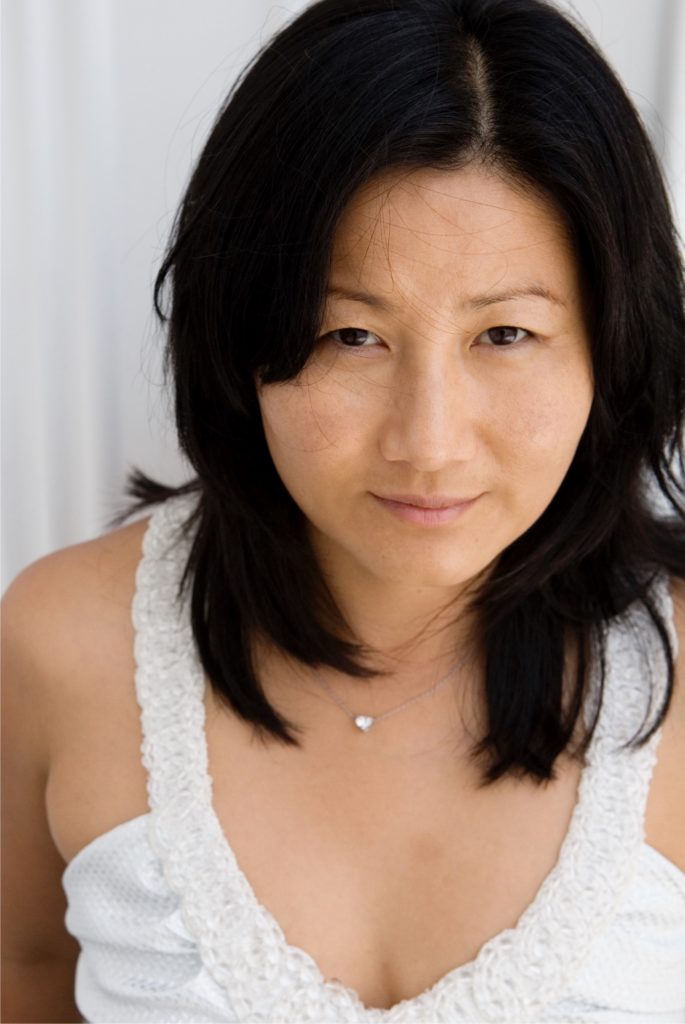
This is very exciting to get to talk to the better half of you and Dion [Beebe]. I have spoken with him in the past about some of his other films, but once again, he does a beautiful job here as your cinematographer with I AM WOMAN.
Oh, that’s so funny! Have you talked to Dion, too? You should have had him on the call too. We could have bombarded you in stereo!
That would have been lovely, but I’m so excited to talk to you about this film! Like yourself, we’re both of the same era and grew up in a world of Helen Reddy. I admit to being a die-hard fan. I have every album, all originals from purchase at the time of release, and as soon as I watched your film, I had to pull every single one of them out and stay up all night long listening to every track on each album all over again.
I love that! That’s so fantastic. Listening to those songs must have taken you back to the first time you heard each of them.
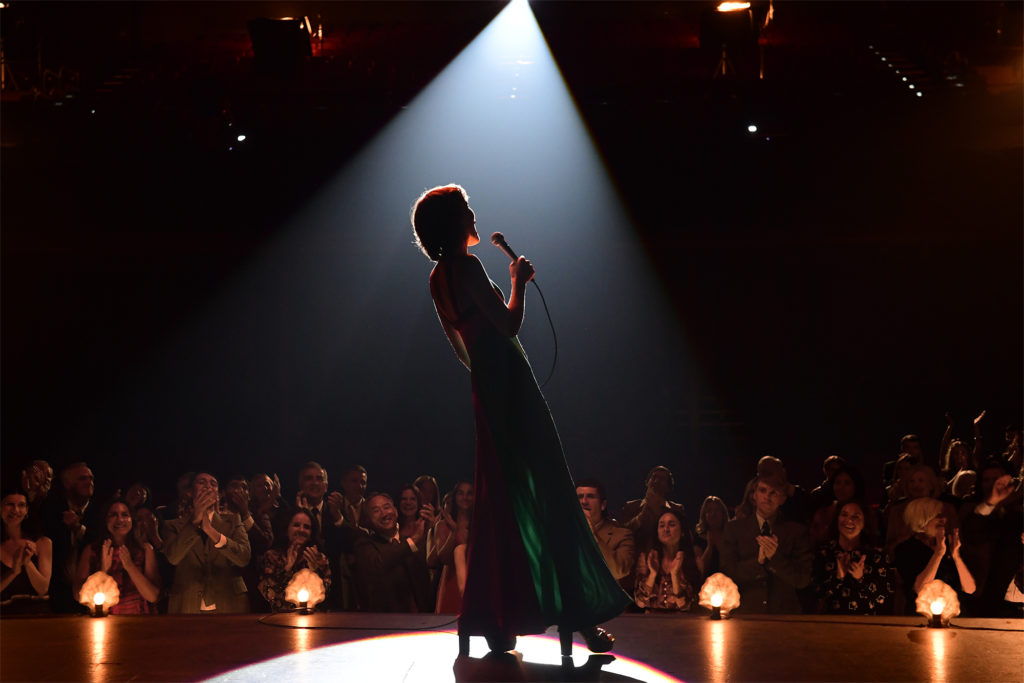
Definitely. And as you hear them, you remember every concert. I attended at least one concert during every tour that she did from the time she started touring in the U.S., be it on the East Coast, West Coast or flying to Vegas. After what we’ve seen about Queen and Freddie Mercury and Elton John, it’s about time we get a film like this about Helen Reddy! Granted, we’re not going to have the flamboyance and opulence of Bohemian Rhapsody or Rocketman because that’s not who Helen Reddy is, but what we do have, what you give us, is a very soulful and sincere portrayal of this iconic woman. You have done an amazing job with this film, Unjoo.
Oh, thank you. I feel that, for me, the film really reflects Helen and it also reflects the way the fans and the people remember her. She wasn’t a Freddie Mercury and she’s not an Elton John, so there’s really no comparison for this movie to go by, and if somebody watches it expecting that, then they don’t know Helen Reddy.
She never played huge stadiums. She typically played smaller venues like Valley Forge Music Fair in Philly or Universal Amphitheatre or The Greek. I still remember every performance and her in a red dress, which was one of her concert signatures. She had multiple red gowns and they were signature moments in her performance in every show, so I was tickled to see that your costumer Emily [Seresin] brought in costuming variations on her signature red dresses.
We really worked on that. There was a lot of research done into her wardrobe. I went into every aspect of her. If you’re a Helen Reddy fan, you’ll know even the different hair hairstyles we went through. One of her really great, what I call “super fans”, when he saw the trailer, he actually went and did a little visual comparison of the costumes in the movie to Helen’s real-life costumes. That was really great to see. I think that Tilda [Cobham-Hervey] had like 75 costume changes in the film and Emily made a lot of those costumes from scratch.

That’s surprising because most of the film takes place in the 70’s and into the 80’s and there’s still a lot of those period outfits around. But then, Helen’s outfits were always so individualized and so specific. You could look for them off the rack in a store but you can never find exactly the same thing, except that sweater vest of hers that you could find everywhere. What was it that made you want to tell this story? Was it because of Helen’s autobiography? Was it your love of the music? I’m curious because Helen Reddy is not exactly who pops up as an artist that a filmmaker wants to do a film on.
I think it was because when I first met her, I met her at an award show in Los Angeles. It was an event celebrating Australian achievement in the arts. She was sitting at the table with Dion and I and was next to Dion. When I realized who it was, I immediately made Dion swap seats with me because I really wanted to talk with her. I didn’t have that same experience as you. I wasn’t out there buying records and didn’t go to a Helen Reddy concert, but I remember when her music first came on the radio and I was a really young child sitting in the back of my parents Volvo station wagon. Her music would come on and my mother and her friend would wind down the window and let down their hair.
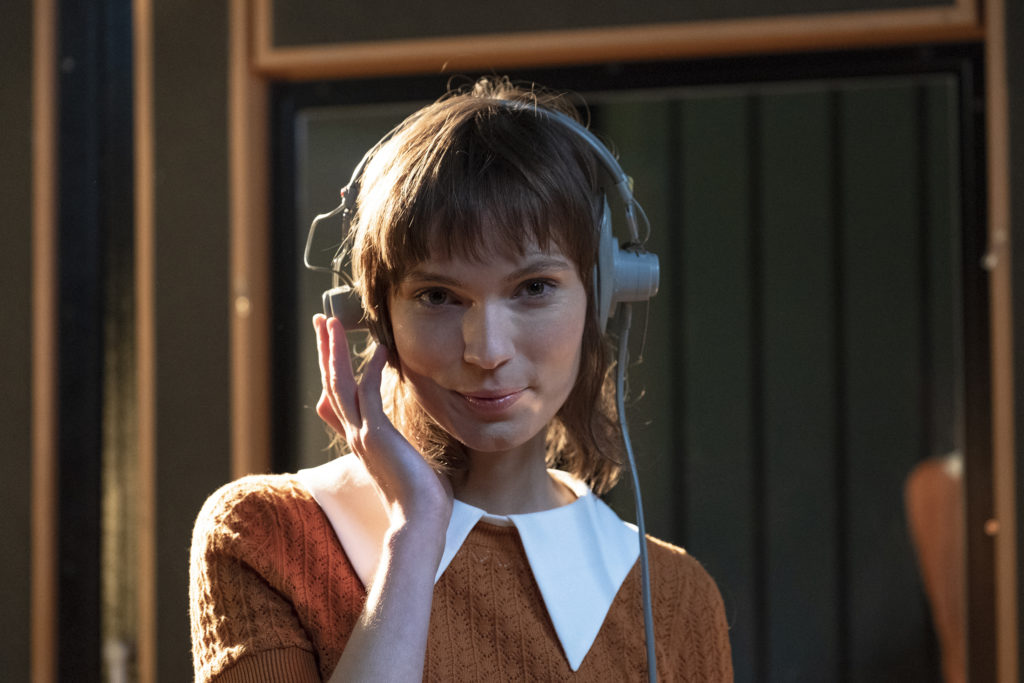
And I watched that and always equated the music with how it made women stronger and bolder. That was my point of curiosity. I just really wanted to try and have a conversation with her about what her motivations were in being an artist. I had no idea the depth and the scope and the breadth of her career was so stunningly international and huge. I think that growing up in Australia the media had not always covered that. I went home that night convinced that somebody probably has already made a movie about her and started to research her on the internet. And you see all those incredible videos of her hosting The Midnight Special, and on The Carol Burnett Show. Plus, Jane Fonda and all these incredible guests like Gloria Steinem, she had on The Helen Reddy Show. Then all that incredible video of the shows that she did in Vegas with that red dress that you’re talking about. There’s one video and I think at the end of it, I was really stunned by what I saw and how evocative it was. But I was even more shocked that nobody had actually made a film about her! As I got to know her, I think what really compelled me to make the film was not just about her, it’s not about success or this huge career that she’d had. What really touched me as a filmmaker was just to know her journey as a woman at the end of the story. This really is a story about the power of being a woman and the impact that she’s had on all these people and the legacy that will continue. I think that was really the heart of why I really wanted to make the movie.
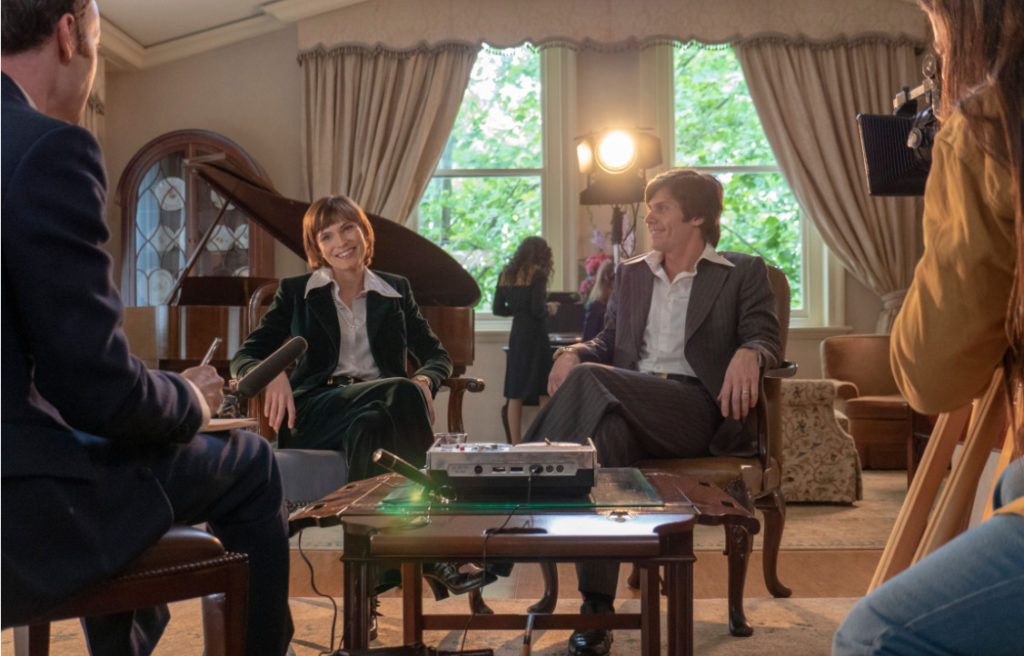
That heart comes through on screen in spades. And a lot of that shows in your construct of the film, the way you’ve broken this out; also your musical selections, because the songs you picked out of her entire catalogue from which you had so many choices, but the ones that you picked and the way that you worked with Dany Cooper, your editor, whose work I have loved going back to December Boys, and where you have the songs inserted into the film, just soars. The songs work very much the way songs worked in MGM musicals back in the Golden Age of Hollywood. The lyrics of these songs are the dialogue in scenes. You and Me Against the World pops up in two seminal moments. I Will Follow Him essentially sets the tone for what Helen does. She follows Jeff [Wald]. She goes to LA with him. And then at each step of her life, a song speaks to her journey. When Jeff is a total train wreck and their marriage is ending, at about the one-hour 36-minute mark, we hear Ain’t No Way To Treat A Lady which fuels a montage that carries us into 1989. Just perfection throughout. How difficult was this?
That was constructed right from the very beginning. Even at the scriptwriting stage, Emma [Jensen] and I discussed extensively like the placement of each of the songs. Obviously I know her music incredibly well and I also got to spend time with Helen on that last tour that she did when she was in her 70’s. It was a very brief moment, but a really crucial moment for me because I saw her in Los Angeles. She performed in Palm Springs, in Florida, and I went to Vegas where Emma and I got to really talk to her fans. There were people there like you who had been to lots of Helen Reddy concerts. Some of them had been to every single handling and ready concert there ever has been in America. I got to meet Jim who’s the president of her fan club. I think that in really talking to her fans, I got to really sense which are the key songs the people really love about Helen and which of the songs that meant something to people. If they meant something to an audience, it would mean something to Helen’s story. So once we had sort of the grouping of the songs, we then really looked at how to place them in a way that they help tell the story. I really thought of this movie as a musical at the very beginning because a musical is where the songs kind of really tell the story and some of these songs fell in easily. Some of them were a little more difficult. Some of them we had rights problems with. There was one song that I really wanted to use but I couldn’t use it. We had to really, really fight to get You’re My World. That was a tough, tough song to get into the movie. But, the placement of the songs actually didn’t really change very much from the conception when we first started working on the script.

But I’m so glad that you brought up Dany Cooper because Dany was such an integral and important part of the making of this movie. The editing process was really quite tough because we didn’t have a lot of time. We were working crazy hours and she was completely supportive of it. I think we were getting into the editing room at eight o’clock in the morning and leaving at 11 o’clock at night sometimes. You know just how much goes into telling the story and constructing the story and constructing performance through editing, and Dany was so integral to that. She’s an incredible, incredible collaborator. I loved every aspect of making this movie, and I loved shooting the movie, but the time I spent with her in the editing room was a really special time.
The montages that you have, and the montages set to specific songs, are exquisite. At the 53 minute mark where she’s writing I Am Woman and she’s back in clubs and we’re bouncing back and forth with Lillian [Roxon], with Billboard charts and we see the song rising on the charts each week, and a new baby, a new house, and that seminal moment in music and Grammy history when Helen wins her Grammy and thanks God for “She makes everything possible”. . . perfection. Exquisite perfection.
I really want to say that I have another great collaborator who is in some ways my primary collaborator, Dion Beebe. We’re a very small film. We can’t really compete on the budget level that a lot of the music biopics have. So everything that you see on the screen had to be so carefully planned. We couldn’t have waste. Everything had to help to advance and tell the story and really help create Helen. Tilda did such an extraordinary job being Helen, but the creation of Helen Reddy on the screen was such a huge collaboration between everybody – Tilda the hair, makeup, wardrobe, cinematography, editing. We all stepped in to help create that.
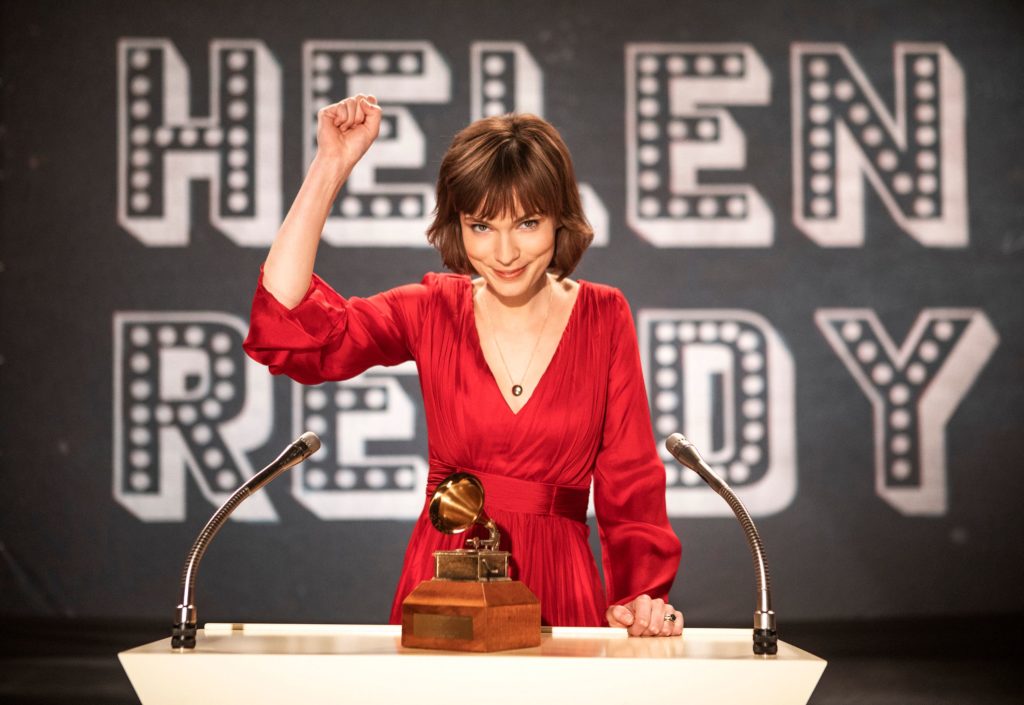
Some of those montages weren’t so specifically written into the script, but some of them, as we were shooting, we realized that we needed that sort of immediate storytelling with images. Because Dion and I, as you know, we’re married, so we have a really clear communication and we’ve known each other since film school so we’ve always worked together, and we were able to really be sort of fairly clear about what we wanted there. Lucky for me as a director, but maybe kind of a pain for Dion, is that we could never get away from the movie or the making of the movie 24/7, which we both really enjoyed because when you’re both a couple working in the film industry and you often don’t get to spend a lot of time together. So we got to spend a lot of time together. It also meant that when we weren’t shooting we could really spend a lot of our non-onset hours talking about what we were doing. We would watch dailies together while having dinner. We really talked about what we’re gonna do the next day. And as you know, and you’ve watched a lot of his movies, you know the extraordinary talent he is. He really creates magic. Even with the limited resources that we had, he really created something so special. And working with our production designer Michael Turner, who also had the experience of living in America because we shot pretty much the entire movie except for two and a half days in Australia. So we had to recreate Las Vegas, Los Angeles, New York, and Washington in Sydney. We really had to work hard to make that all believable.
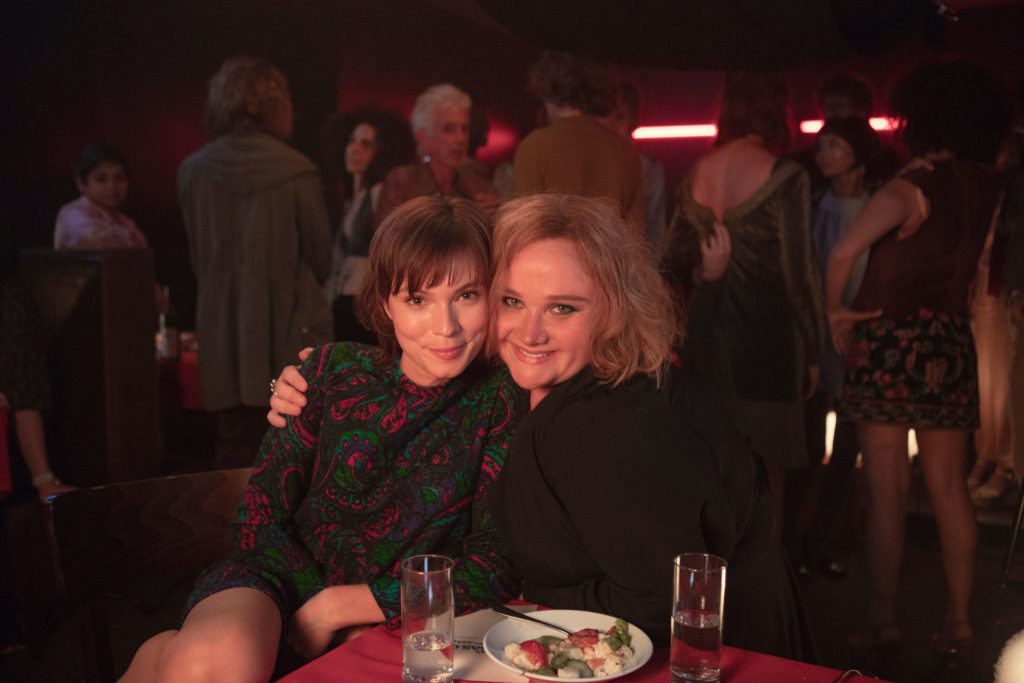
Talking about your partner in crime Dion, because you span several decades and you span Helen’s economic condition throughout that time, I’m curious what your conversations were like to design the visual tonal bandwidth of this film, because of the extreme differences in range. We get the seedier darker feel of that horrible hotel in New York, and I love how you had the T-E-L lights burnt out on the outside sign so all you see is “H-O”, giving us a potential double entendre. I chuckled when I saw that. But you go from that world and out to LA and then more opulence as Helen’s career grows and the visual tone gets brighter and brighter and brighter. And then you bring us back down again. So I’m curious what the two of you were looking at for influences to come up with this visual bandwidth.
First of all, we had a lot material already out there, as we were talking earlier, that was on YouTube with Helen’s concerts. So we could really reference a lot of her performance work. But visually we had to dig a lot deeper because we needed to create, carefully create that world in terms of Helen’s emotional journey. In the research, whenever we were in different cities, we really got to go to a lot of the real locations. So we went to the places in Los Angeles that Helen had actually lived in. We went and visited all the houses. We obviously know the streets of Los Angeles really well and when we’re in New York, we went and visited the original Hotel Albert. We looked at where the original Max’s Kansas City had been, and in Washington, I had gone to the location of the Women’s March and stood in that exact same spot that Helen does at the end of the movie. I looked out across the Lincoln Memorial, of course, this time I was looking out at a sea of pink hats when I was there, but people were still holding up signs saying “I’m strong. I’m invincible”, which was pretty amazing to say the least. We really drew from the real places that she had been. And then we actually took a lot of photographic references of that time. We actually use a lot of still photography references, especially in New York, because we felt that New York needed to be gritty and dirty. We found some amazing sort of, street photography of New York, where you could see people in trains. Originally in the script, a lot of those sequences of Helen and Lilian when they talking, they were actually just walking in the streets of New York. We could obviously never afford to go to New York and recreate New York streets to that length in Sydney, Australia, so when we were looking at these photos I started looking at all these great images of the people in subway. We just thought, we’ll reposition those scenes and put them into a subway because that feels like New York anyway – and that’s more achievable for us. Also, I think that Helen being on that train, at the beginning of the film, it really adds to the sense of the journey that she’s going to go on as well. We really had talked through those color palettes at the beginning of the movie, creating that sort of richer, grittier feel. Then, naturally when you come to Los Angeles feeling the lightness and the brightness – Los Angeles has such a different light in comparison to New York – but it also seemed to fit Helen’s emotional journey as well, because as her career rises, the film does become sort of lighter and it does open up more. We were discussing the movie visually in terms of the emotional journey that Helen was going on and that became very important in trying to support the story.

We also shot the film on the 6K Alexa. I think it really captures what we we intended to do so well. Those cameras didn’t even exist in Australia and Arri ended upon sending them over to us from the UK just for the movie. I think what was really interesting about using those cameras is that they are normally thought of as cameras for action, a big action kind of movie, but I think that Arri was really interested in having them on our film because we were really able to showcase the fact that you could use them for intimate drama.

Tilda does an amazing job as Helen. There are so many moments in the film where I’m doing a double-take. She even got her walk down because Helen strides when she walks. It’s a very distinctive look and Tilda nails it with Helen’s demeanor and the way she’s holding microphones and whatnot. But I’m curious why you went with Chelsea Cullen to do the singing and was it ever a consideration to use Helen’s original recordings and have Tilda lip sync to that?
It’s really interesting because when you talk about the way they made musicals back in the golden years of Hollywood, they had a very specific way of recording the singing voice which is kind of the leaf the we took. When you think about West Side Story or that Deborah Kerr and Natalie Wood are both actually voiced by the same person, the way they approached it really makes you believe that both Deborah and Natalie is singing. Initially, we did try to use Helen voice, but there were two problems with that. First of all, when you put Helen’s voice coming out of Tilda, it didn’t feel right, it didn’t sound like it was coming out of Tilda’s body. So you couldn’t believe it. And secondly, as you were saying, the songs are placed in the movie in a way that they track Helen’s emotional journey and the songs actually don’t necessarily just play like a recording. So if you would just to use the songs off the album in a lot of cases, those songs would not work because they wouldn’t really tell the story. They would just sound like a really fantastic album recording, which is what they would be. So we really needed to capture the emotional context of how those songs were placed. We tried so many, many different things too, to kind of see what the option would be. We auditioned maybe 50 people around the world to try and get the perfect voice that could sound like Helen, but also that you would believe was coming up emotionally. When we found Chelsea it was kind of amazing because she’s actually from Australia as well. I don’t know if you realize in the movie it’s actually a mix of Helen songs and Helen, Helen singing some of the songs and Chelsea singing. I think it’s been really successful. Jeff Wald couldn’t tell the difference and he’s been listening to Helen his whole life! He actually thought and he kept saying, “How did you rerecord that in that way?” Some of those recordings like Delta Dawn, and You and Me Against the World, don’t play in the same way that they do in the album. I hope that answers your question about why we made that choice. But we also put Helen’s voice in there at the beginning [with You’re My World], so that it sets the tone and the rest of the movie so Chelsea sounds more like Helen because you’ve already heard Helen’s voice at the beginning.
by debbie elias, exclusive interview 9/11/2020
[This video has been removed by the creator.]












